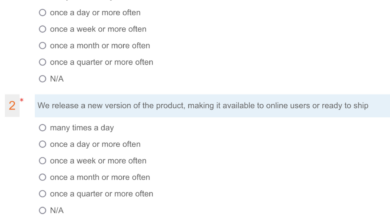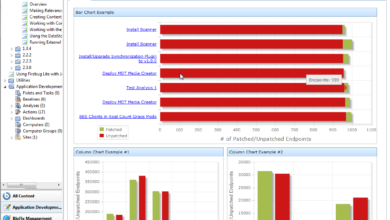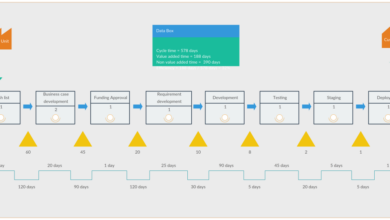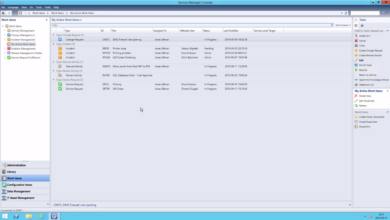
Becoming a High-Performing Organization with an Engineering-First Mindset
Becoming a high performing organization with an engineering first mindset – Becoming a high-performing organization with an engineering-first mindset isn’t just a buzzword; it’s a fundamental shift in how you approach innovation, efficiency, and growth. This journey involves attracting top-tier engineering talent, building robust teams, and implementing processes that prioritize quality and speed. It’s about creating a culture where engineers are empowered to drive progress, where their expertise is valued, and where their contributions directly impact the bottom line.
This isn’t just about writing better code; it’s about building a better future.
This blog post delves into the key strategies and principles behind building a truly engineering-first organization. We’ll explore how to attract and retain top talent, build high-performing teams, implement effective engineering processes, and foster a culture of innovation and continuous improvement. We’ll also examine how to align engineering efforts with overall business goals and measure the impact of this approach on your organization’s success.
Get ready to rethink your approach to organizational structure and unlock your company’s full potential.
Defining “Engineering First” Mindset
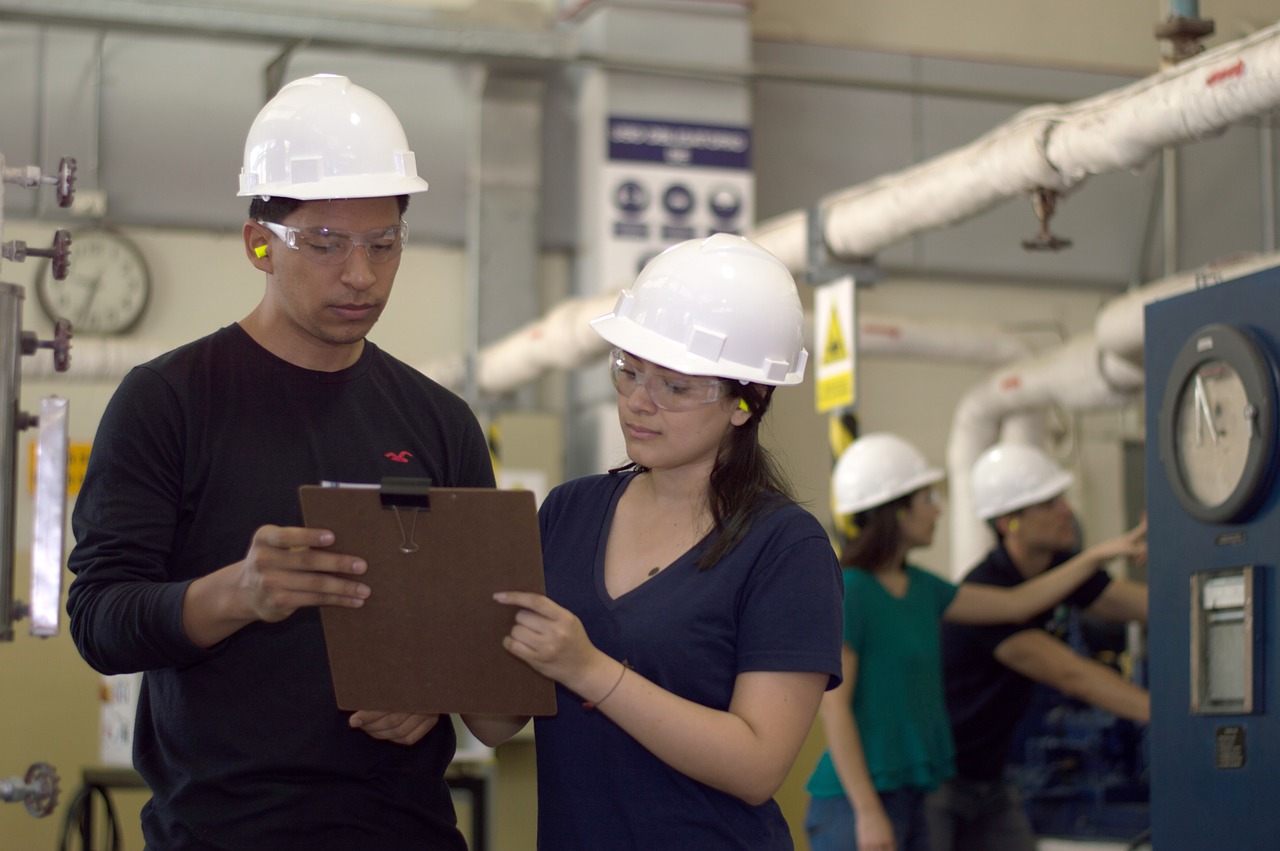
An engineering-first mindset isn’t just about prioritizing engineers; it’s about embedding engineering principles – rigor, data-driven decision-making, iterative development, and a focus on building robust, scalable systems – throughout the entire organization. It’s a cultural shift that values technical excellence and sound engineering practices as the foundation for all business operations.This approach contrasts sharply with other organizational philosophies that might prioritize sales, marketing, or even finance above all else.
While these functions are crucial, an engineering-first approach suggests that a strong engineering foundation is the bedrock upon which all other successful business activities are built. A company focused solely on rapid sales growth, for instance, might neglect critical aspects of product quality and long-term scalability, ultimately hindering its own success.
Core Principles of an Engineering-First Culture
The core principles of an engineering-first culture revolve around several key tenets. Firstly, there’s a deep commitment to building high-quality, reliable products and services. This commitment manifests in rigorous testing, continuous integration/continuous deployment (CI/CD) pipelines, and a strong emphasis on code quality and maintainability. Secondly, data informs every decision. Instead of relying on intuition or guesswork, decisions are based on hard data, analytics, and rigorous experimentation.
Thirdly, there’s a strong emphasis on iterative development and continuous improvement. Products and processes are constantly being refined and improved based on feedback and data analysis. Finally, a culture of collaboration and knowledge sharing is fostered, allowing engineers and other teams to work together effectively.
Comparison with Other Organizational Philosophies
An engineering-first approach differs significantly from a sales-first or marketing-first approach. In a sales-first organization, the focus is on closing deals quickly, sometimes at the expense of product quality or long-term sustainability. A marketing-first approach prioritizes brand building and customer acquisition, potentially overlooking the underlying engineering challenges required to deliver on brand promises. Conversely, an engineering-first organization views engineering excellence as a competitive advantage, ensuring that the product or service is robust, scalable, and meets the needs of customers effectively.
This approach often leads to superior product quality, increased customer satisfaction, and long-term business success.
Practical Implications of Adopting an Engineering-First Mindset
Adopting an engineering-first mindset requires significant organizational change. This includes investing in robust engineering infrastructure, hiring and retaining top engineering talent, and empowering engineers to make critical decisions. It also requires a commitment to continuous learning and improvement, with regular training and development opportunities for engineers and other team members. Furthermore, clear communication and collaboration across departments are vital.
Engineers need to effectively communicate technical complexities to non-technical stakeholders, while other departments need to understand and respect the engineering process. The result is often a more efficient and productive organization, with a greater ability to innovate and adapt to changing market conditions.
Examples of Companies with Successful Engineering-First Cultures
Many technology giants have successfully implemented an engineering-first culture. Google, for example, is known for its rigorous engineering processes, data-driven decision-making, and commitment to innovation. Their focus on building scalable and reliable systems has enabled them to dominate many sectors. Similarly, companies like Amazon, with its focus on automation and operational excellence, and Netflix, with its commitment to continuous delivery and A/B testing, exemplify the benefits of an engineering-first approach.
These companies invest heavily in their engineering teams, providing them with the resources and autonomy they need to build world-class products and services. Their success serves as a testament to the power of prioritizing engineering excellence.
Attracting and Retaining Top Engineering Talent: Becoming A High Performing Organization With An Engineering First Mindset
Building a high-performing organization with an engineering-first mindset hinges on attracting and retaining the best engineering talent. This isn’t just about offering competitive salaries; it’s about crafting a holistic experience that values engineers’ contributions, fosters growth, and creates a truly exceptional workplace. A strong recruitment strategy, coupled with robust retention initiatives, is crucial for sustained success.
Recruitment Strategy for Top Engineering Talent
Attracting top-tier engineering talent requires a multi-pronged approach that goes beyond simply posting job ads. We need to actively cultivate our employer brand and showcase the unique opportunities we offer. This involves highlighting our engineering culture, the impact engineers have on our products and services, and the opportunities for professional development and growth.
Effective Employee Retention Strategies for Engineers
Retaining top engineers necessitates a proactive and comprehensive strategy. It’s about creating an environment where engineers feel valued, challenged, and supported in their careers. This involves regular performance reviews with clear feedback and opportunities for advancement, mentorship programs to guide career progression, and providing opportunities for engineers to contribute to challenging and impactful projects. Investing in their professional development through conferences, training, and certifications demonstrates a commitment to their long-term growth within the company.
Fostering a Positive and Supportive Engineering Work Environment
A positive and supportive work environment is paramount for retaining engineering talent. This means fostering a culture of collaboration, open communication, and mutual respect. Providing engineers with the resources and tools they need to do their jobs effectively, such as modern equipment, flexible work arrangements, and access to cutting-edge technologies, demonstrates a commitment to their success. Regular team-building activities and social events can also help to build camaraderie and strengthen team bonds.
Equally important is actively promoting work-life balance, recognizing that burnout is a significant factor in attrition.
Competitive Compensation and Benefits Package, Becoming a high performing organization with an engineering first mindset
A competitive compensation and benefits package is crucial for attracting and retaining top engineering talent. This goes beyond simply matching market rates; it involves offering a comprehensive package that includes competitive salaries, comprehensive health insurance, generous paid time off, and retirement plans. Additionally, offering perks such as professional development stipends, flexible work arrangements, and employee stock options can significantly enhance the overall attractiveness of the package.
For example, offering a generous parental leave policy can be a significant differentiator, particularly for attracting and retaining female engineers. Regular salary reviews and adjustments to ensure competitiveness within the market are also essential. Consider offering performance-based bonuses and profit-sharing to further incentivize high performance and loyalty.
Building High-Performing Engineering Teams
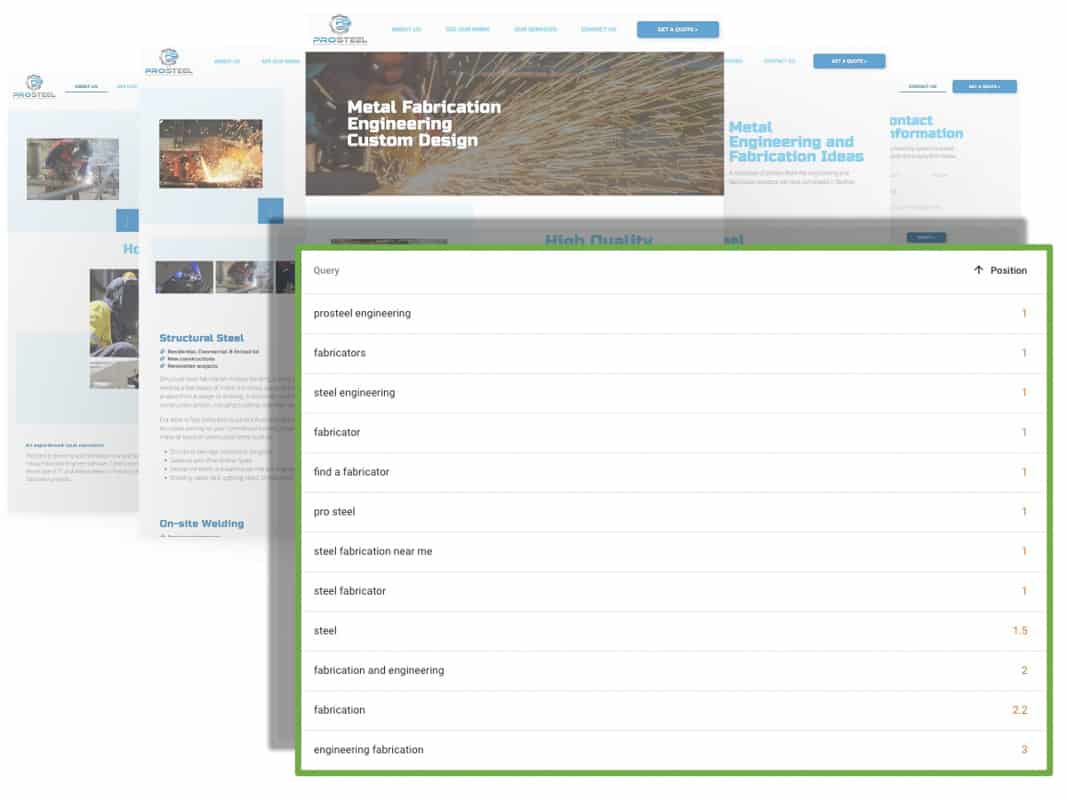
Building high-performing engineering teams is crucial for any organization aiming for an “engineering first” mindset. It’s not just about assembling talented individuals; it’s about fostering a collaborative environment where those individuals can thrive, innovate, and deliver exceptional results. This requires a strategic approach to team structure, performance measurement, management, and continuous learning.
Optimized Team Structure for Collaboration and Efficiency
A well-structured engineering team facilitates seamless collaboration and maximizes efficiency. The optimal structure depends on the organization’s size, project complexity, and overall goals. However, some common principles apply. For example, smaller, cross-functional teams often outperform larger, siloed ones. This allows for quicker decision-making, increased communication, and a stronger sense of shared ownership.
Agile methodologies, with their iterative approach and emphasis on close collaboration, can be highly effective in this context. Furthermore, clearly defined roles and responsibilities, along with established communication channels, prevent bottlenecks and misunderstandings. A matrix structure, where engineers report to both a project manager and a technical lead, can be particularly effective for managing multiple projects simultaneously.
Key Performance Indicators (KPIs) for Engineering Team Success
Measuring engineering team success requires carefully selected KPIs that reflect both the quantity and quality of work. Traditional metrics like lines of code or bug fixes are insufficient; they don’t capture the overall impact on the business. Instead, focus on KPIs that align with the organization’s strategic objectives. Examples include: deployment frequency, mean time to recovery (MTTR), customer satisfaction scores related to product performance, and the number of successful feature releases.
These KPIs provide a holistic view of the team’s performance, highlighting areas of strength and areas needing improvement. Regular monitoring and analysis of these KPIs are essential for identifying trends and making data-driven decisions.
Effective Methods for Managing and Motivating Engineering Teams
Effective management of engineering teams goes beyond simply assigning tasks. It involves creating a supportive and challenging environment that encourages creativity and innovation. This includes providing engineers with the resources and autonomy they need to excel. Regular feedback, both positive and constructive, is vital for growth and development. Furthermore, fostering a culture of trust and open communication enables team members to feel comfortable sharing ideas and concerns.
Motivating engineers often involves recognizing and rewarding their contributions, providing opportunities for professional development, and offering challenging projects that align with their interests and skills. Transparency regarding company goals and the team’s role in achieving them is also a key element of effective motivation.
Strategies for Promoting Continuous Learning and Development
Continuous learning is essential for maintaining a high-performing engineering team in a rapidly evolving technological landscape. Strategies for promoting this include providing access to training courses, conferences, and workshops; encouraging engineers to participate in open-source projects; establishing mentorship programs; and promoting internal knowledge sharing through presentations, brown bag sessions, and internal wikis. Supporting engineers in pursuing certifications or advanced degrees demonstrates a commitment to their professional growth and enhances their skills.
Regular skill assessments can identify areas where additional training is needed, ensuring the team remains at the forefront of technological advancements. Furthermore, allocating time for experimentation and learning new technologies fosters a culture of innovation and keeps the team adaptable to changing market demands.
Implementing Effective Engineering Processes
Building a high-performing engineering organization requires more than just attracting top talent; it necessitates the implementation of robust and efficient engineering processes. These processes act as the backbone, ensuring consistent quality, predictable delivery, and a positive engineering culture. Without them, even the most skilled engineers will struggle to reach their full potential.
Agile Methodologies in an Engineering-First Environment
Agile methodologies, emphasizing iterative development and collaboration, are crucial for an engineering-first organization. Their adaptability allows for quick responses to changing requirements and market demands, a key advantage in today’s fast-paced technological landscape. Scrum, for example, utilizes short sprints (typically two weeks) to deliver incremental value, fostering continuous feedback and improvement. Kanban, on the other hand, focuses on visualizing workflow and limiting work in progress, promoting efficiency and preventing bottlenecks.
In an engineering-first environment, these frameworks empower engineers to take ownership and make decisions, accelerating development cycles and enhancing product quality. For instance, a company using Scrum might dedicate a sprint to addressing a critical performance bottleneck identified by user feedback, demonstrating the agile response to real-world challenges.
Code Review and Quality Assurance Processes
Rigorous code review and quality assurance (QA) processes are non-negotiable for maintaining high code quality and reducing bugs. Code reviews, ideally conducted by peers, offer a chance to identify potential issues early on, improve code readability and maintainability, and share knowledge within the team. QA processes, including automated testing and manual testing, ensure that the software meets the specified requirements and functions correctly.
A well-defined code review process might involve checklists for common coding errors, automated style checks, and a clear rubric for evaluating code quality. For example, a team might use a tool like SonarQube to automatically analyze code for bugs and vulnerabilities, supplementing manual peer reviews. Automated testing, including unit, integration, and system tests, can significantly reduce the time spent on manual testing, allowing for more frequent releases.
Robust Testing and Deployment Procedures
Robust testing and deployment procedures are vital for ensuring software reliability and minimizing disruptions. This involves a comprehensive testing strategy covering various aspects of the software, including functional, performance, security, and usability testing. Deployment procedures should be automated as much as possible to reduce human error and increase efficiency. Continuous integration and continuous delivery (CI/CD) pipelines automate the build, test, and deployment process, enabling frequent and reliable releases.
A robust testing strategy might involve implementing automated UI tests using tools like Selenium, along with load testing to ensure the application can handle expected user traffic. A CI/CD pipeline, on the other hand, could automate the entire process from code commit to deployment to a staging or production environment, reducing deployment time and minimizing risk. Imagine a scenario where a banking application uses a CI/CD pipeline to deploy security patches within hours of detection, significantly reducing the window of vulnerability.
Engineering Project Tracking and Management
Effective project tracking and management systems are crucial for maintaining visibility, accountability, and progress. This involves utilizing project management tools to track tasks, deadlines, and resource allocation. Regular progress reports and status meetings ensure that everyone is informed and aligned. Tools like Jira or Asana can be used to track tasks, assign responsibilities, and monitor progress. These tools can also integrate with other development tools, providing a holistic view of the project lifecycle.
A well-defined system might involve using Kanban boards to visualize the workflow, creating detailed task breakdowns, and utilizing burndown charts to monitor progress against deadlines. For example, a team working on a large-scale software project might use Jira to track individual tasks, sprint progress, and overall project timelines, ensuring transparency and facilitating effective collaboration.
Fostering Innovation and Continuous Improvement
Building a high-performing engineering organization requires a commitment not just to efficiency, but also to constant innovation and improvement. A culture that actively encourages new ideas, embraces experimentation, and learns from both successes and failures is crucial for long-term success and competitiveness. This section Artikels strategies to cultivate such a culture within your engineering team.
Encouraging Creativity and Innovation
Fostering a creative and innovative environment within the engineering team involves more than just brainstorming sessions. It necessitates a systemic approach that values experimentation, tolerates failure, and rewards creative problem-solving. This involves creating space for engineers to explore new ideas, providing resources for experimentation, and celebrating innovative solutions, even those that don’t immediately yield a perfect outcome.
One effective strategy is to dedicate specific time during sprints or projects for “innovation sprints,” short bursts of focused effort dedicated to exploring new ideas and technologies. These sprints should be separate from the primary project goals, allowing engineers to experiment without pressure to deliver immediate results. Furthermore, establishing a system for recognizing and rewarding innovative contributions, whether through formal awards or informal team recognition, significantly encourages creative thinking.
This could include highlighting successful innovations in team meetings, showcasing them in company newsletters, or offering small bonuses for particularly impactful ideas.
Gathering and Acting Upon User and Stakeholder Feedback
Gathering and acting on feedback from users and stakeholders is essential for ensuring that engineering efforts align with actual needs and expectations. Ignoring feedback can lead to the development of products or features that fail to meet market demands, ultimately hindering the organization’s success. Effective feedback mechanisms must be implemented and actively utilized.
This can involve implementing regular user surveys, conducting user interviews, and analyzing user data collected through product usage. Furthermore, establishing clear communication channels between the engineering team and stakeholders ensures that feedback is effectively communicated and addressed. A well-defined process for prioritizing and implementing feedback based on its impact and feasibility is crucial. This process should include a system for tracking feedback, assigning ownership, and setting deadlines for addressing identified issues.
Identifying and Addressing Technical Debt
Technical debt, the implied cost of rework caused by choosing an easy (limited) solution now instead of using a better approach that would take longer, is a common challenge in software development. Ignoring technical debt can lead to increased development time, reduced code quality, and ultimately, higher costs in the long run. Proactive identification and management of technical debt are therefore crucial for maintaining a healthy and efficient engineering organization.
Regular code reviews, automated code analysis tools, and consistent adherence to coding standards can help identify potential sources of technical debt. Prioritizing the remediation of technical debt based on its impact on performance, maintainability, and future development is essential. This can involve allocating specific time during sprints to address technical debt or creating dedicated projects focused solely on refactoring and improving code quality.
A clear system for tracking and managing technical debt, including its impact and priority, should be implemented.
Measuring and Improving Engineering Team Efficiency
Measuring and improving engineering team efficiency requires a multifaceted approach that considers various metrics and methodologies. Simply focusing on lines of code or the number of features delivered can be misleading. A more holistic approach is needed to truly understand and improve team performance.
Key performance indicators (KPIs) such as lead time (time from code commit to deployment), cycle time (time spent on a single task), and deployment frequency can provide valuable insights into team efficiency. Analyzing these metrics can help identify bottlenecks and areas for improvement. Furthermore, using tools for tracking work progress, such as Kanban boards or Agile project management software, allows for real-time monitoring of team performance and identification of potential issues.
Regular team retrospectives, where the team reflects on past performance and identifies areas for improvement, are also crucial for continuous improvement. By regularly assessing these metrics and adapting processes accordingly, the engineering team can continuously enhance its efficiency and effectiveness.
Aligning Engineering with Business Goals

Successfully aligning engineering efforts with overarching business objectives is crucial for any high-performing organization. It’s not enough to build great technology; that technology must directly contribute to the company’s strategic goals, whether it’s increased market share, improved efficiency, or the launch of a new product line. This alignment requires clear communication, effective prioritization, and strong cross-functional collaboration.Effective communication is the cornerstone of this alignment.
Engineers often speak a different language than marketing, sales, or finance teams. Bridging this communication gap is essential for ensuring everyone understands the engineering team’s progress, challenges, and the impact of their work on the business.
Communicating Engineering Progress and Challenges to Non-Technical Stakeholders
Clear and concise communication is paramount. Instead of delving into technical jargon, focus on the high-level impact. For example, instead of saying “We’re refactoring the microservice architecture to improve scalability,” try “We’re upgrading our system to handle a projected 30% increase in user traffic, ensuring a seamless experience for our customers.” Visual aids like charts, graphs, and simplified diagrams can also greatly enhance understanding.
Regular, short progress reports, coupled with occasional more in-depth presentations tailored to the audience’s technical understanding, are highly effective.
Translating Business Requirements into Actionable Engineering Tasks
This involves a careful process of requirements gathering, analysis, and decomposition. Business requirements, often expressed in broad terms, need to be translated into specific, measurable, achievable, relevant, and time-bound (SMART) engineering tasks. This might involve using techniques like user stories, use cases, or creating detailed technical specifications. For example, a business requirement like “Improve customer satisfaction” might translate into engineering tasks such as “Reduce website load time by 50%,” “Implement a new customer support chatbot,” or “Develop a more intuitive user interface.”
Prioritizing Engineering Projects Based on Business Needs
Several approaches exist for prioritizing engineering projects. A common method is using a weighted scoring system, where projects are evaluated based on factors such as business value, risk, and feasibility. Another approach is to use a MoSCoW method (Must have, Should have, Could have, Won’t have), categorizing requirements based on their importance. A third approach is value vs.
effort matrix where projects are plotted based on the business value they deliver and the effort required to implement them. The choice of method depends on the organization’s specific needs and context. For instance, a startup might prioritize features with high potential for rapid revenue generation, while an established company might focus on projects that improve operational efficiency or reduce risk.
Successful Collaborations Between Engineering and Other Departments
Successful collaboration often hinges on establishing clear communication channels and shared goals. For example, a collaboration between engineering and marketing might involve engineers providing technical input on marketing campaigns, ensuring the feasibility and effectiveness of proposed features. Similarly, collaboration with sales could involve engineers providing technical support and training to sales representatives. Joint planning sessions, regular meetings, and embedding representatives from different departments within project teams can foster stronger collaboration and understanding.
A successful example could be a software company where the engineering team worked closely with the marketing team to develop a new marketing campaign that highlighted a recently released feature. This collaboration resulted in a significant increase in user engagement and ultimately boosted sales.
Measuring and Improving Organizational Performance
Adopting an engineering-first mindset isn’t just about changing the culture; it’s about demonstrably improving the bottom line. To ensure our efforts are effective, we need a robust system for measuring and improving organizational performance. This involves identifying the right metrics, visualizing progress, and establishing a continuous improvement loop. Only then can we truly understand the impact of our engineering-first approach and refine our strategies accordingly.
Measuring the success of an engineering-first approach requires a multifaceted approach. We can’t rely on a single metric; instead, we need a balanced scorecard that considers both engineering efficiency and its contribution to broader business objectives. This involves tracking key performance indicators (KPIs) across various aspects of the engineering lifecycle, from initial concept to final product delivery and beyond.
Key Metrics for Evaluating Engineering Effectiveness
To accurately gauge the success of our engineering-first approach, we need to establish clear and measurable metrics. These metrics should provide a holistic view, encompassing aspects like productivity, quality, and business impact. A well-chosen set of metrics will help us identify areas for improvement and track the effectiveness of our interventions. The following table illustrates some key metrics we can use.
| Metric Category | Specific Metric | Measurement Method | Target/Benchmark |
|---|---|---|---|
| Productivity | Development Velocity (Story Points/Sprint) | Track story points completed per sprint using Agile methodologies | Increase by 15% year-over-year |
| Quality | Defect Density (Defects/1000 lines of code) | Track number of defects found during testing and post-release | Reduce by 10% year-over-year |
| Efficiency | Deployment Frequency (Deployments/week) | Track the number of deployments to production environments | Increase by 20% year-over-year |
| Business Impact | Customer Satisfaction (CSAT) Score | Measure customer satisfaction through surveys and feedback | Maintain a CSAT score above 90% |
Creating a Performance Dashboard
A well-designed dashboard provides a clear, concise, and readily accessible overview of our key performance indicators (KPIs). It should visually represent the progress towards our goals, highlighting both successes and areas needing attention. The dashboard should be easily understandable by both technical and non-technical stakeholders, fostering transparency and accountability. We can utilize readily available business intelligence tools or custom dashboards built using programming languages like Python with libraries such as Plotly or Matplotlib.
The dashboard should dynamically update with real-time data, allowing for immediate identification of trends and anomalies. For instance, a sudden spike in defect density might indicate a need for immediate investigation and process adjustment.
Regular Review and Improvement of Engineering Processes
Continuous improvement is essential for maintaining a high-performing engineering organization. We should establish a regular review process, perhaps a monthly or quarterly meeting, to analyze the data from our performance dashboard. This review should involve engineers, project managers, and business stakeholders to foster a collaborative approach to problem-solving. During these reviews, we’ll identify trends, analyze root causes of issues, and brainstorm solutions.
This iterative process will allow us to continuously refine our engineering processes and procedures, optimizing for efficiency and quality. For example, if we consistently observe low deployment frequency, we might investigate bottlenecks in our deployment pipeline and implement automation to streamline the process.
Measuring the Impact of Engineering Improvements on Business Outcomes
Ultimately, the value of an engineering-first approach lies in its contribution to the overall business objectives. We need to establish a clear link between engineering improvements and positive business outcomes. This could involve tracking metrics like revenue growth, customer acquisition cost, or market share. For example, a reduction in defect density might lead to improved customer satisfaction and reduced support costs, directly impacting the bottom line.
By consistently monitoring these metrics, we can demonstrate the tangible benefits of our engineering investments and justify continued investment in engineering excellence. We can use statistical methods like A/B testing to isolate the impact of specific engineering improvements on key business metrics, providing concrete evidence of their effectiveness.
Cultivating a Culture of Learning and Growth
In a high-performing engineering organization, continuous learning isn’t just a perk; it’s a fundamental pillar of success. A culture that prioritizes growth fosters innovation, improves problem-solving skills, and boosts employee retention. This commitment to learning translates directly into a more adaptable, resilient, and ultimately, more productive engineering team.
Successful Employee Training and Development Programs
Investing in employee development isn’t just about sending engineers to occasional workshops. Effective programs are tailored to individual needs and career goals, integrating diverse learning methods for maximum impact. For instance, a program might include a blend of online courses focusing on specific technologies (like mastering a new programming language or cloud platform), mentorship opportunities with senior engineers, participation in internal knowledge-sharing sessions, and even opportunities for external conferences and workshops to stay abreast of industry trends.
A well-structured program might also incorporate project-based learning, where engineers tackle real-world challenges within the company, gaining practical experience and applying newly acquired skills. Regular performance reviews should include a dedicated section to discuss individual learning plans and progress, ensuring continuous alignment with both personal and organizational goals.
A System for Encouraging Knowledge Sharing and Collaboration
Effective knowledge sharing isn’t accidental; it requires a deliberate and structured approach. Internal wikis, dedicated knowledge bases, and regular technical presentations are excellent tools. Creating a culture where engineers are encouraged to document their work, share best practices, and openly discuss challenges fosters a collaborative environment. This could involve establishing a peer-review system for code, design documents, and even presentations, providing constructive feedback and promoting shared understanding.
Regular internal hackathons or “innovation days” can also stimulate knowledge exchange and spark new ideas. Furthermore, creating designated spaces – both physical and virtual – for informal collaboration, where engineers can easily connect and discuss projects, fosters a sense of community and accelerates knowledge transfer. For example, a dedicated Slack channel or a regular “lunch and learn” session can facilitate this.
The Importance of Mentorship and Sponsorship Within the Engineering Team
Mentorship and sponsorship are distinct yet complementary elements crucial for professional growth. Mentorship focuses on guidance and development, providing junior engineers with the support and advice needed to navigate their careers. Sponsors, on the other hand, actively advocate for their mentees’ advancement within the organization, opening doors to new opportunities and visibility. Pairing senior engineers with junior engineers in a formal mentorship program, with clearly defined goals and regular check-ins, can yield significant benefits.
Furthermore, actively promoting internal mobility and encouraging engineers to seek out mentors and sponsors can cultivate a culture of support and career progression. The company can facilitate this process by creating a mentorship program database or organizing mentorship matching events.
Methods for Fostering a Culture of Continuous Learning and Improvement
A culture of continuous learning thrives on feedback, reflection, and a willingness to adapt. Regular retrospectives, both for individual projects and team efforts, provide opportunities to analyze successes and failures, identify areas for improvement, and adjust processes accordingly. Encouraging engineers to participate in industry events, attend conferences, and pursue relevant certifications demonstrates a commitment to ongoing professional development.
Furthermore, creating a psychologically safe environment where engineers feel comfortable admitting mistakes and learning from them is paramount. This requires open communication, constructive feedback mechanisms, and a leadership style that prioritizes learning over blame. The establishment of a “learning budget” – allocated funds for each engineer to use for training, conferences, or books – further underscores the company’s commitment to continuous learning.
End of Discussion
Embracing an engineering-first mindset isn’t a quick fix; it’s a transformative journey requiring commitment, investment, and a genuine belief in the power of engineering excellence. By prioritizing engineering talent, processes, and culture, you’ll not only build a high-performing organization but also cultivate a workplace where innovation thrives and impactful solutions are delivered consistently. The rewards extend beyond increased efficiency and profitability; they encompass a stronger, more resilient, and future-ready organization.
Are you ready to make the shift?
FAQ Compilation
What are some common pitfalls to avoid when implementing an engineering-first approach?
Ignoring non-engineering perspectives, neglecting soft skills development, failing to adequately resource the engineering team, and not clearly defining success metrics are common pitfalls.
How can I measure the ROI of an engineering-first strategy?
Track metrics like reduced bug rates, faster time to market, improved customer satisfaction, and increased efficiency. Relate these improvements to quantifiable business outcomes like revenue growth or cost savings.
How do I convince leadership to invest in an engineering-first approach?
Present a strong business case highlighting the potential return on investment, emphasizing improved product quality, faster innovation cycles, and enhanced competitive advantage.
What if my company doesn’t have a strong engineering foundation?
Start by assessing your current engineering capabilities, identify skill gaps, and invest in training and development. Focus on building a strong engineering culture gradually.
